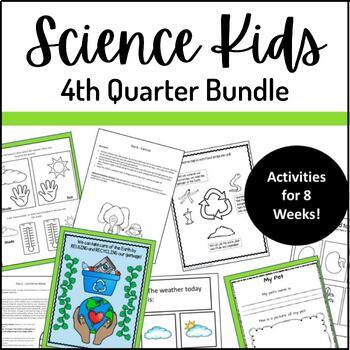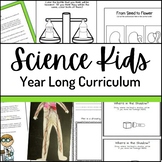Science Kids... Fourth Quarter Bundle
- Zip
- Easel Activity
Products in this Bundle (4)
Also included in
- The Science Kids curriculum is intended to help teachers implement developmentally appropriate, hands-on science activities for children in Preschool, Kindergarten and the early grades. The activities in these packets are based on the scientific method and encourage inquiry-based learning. All activPrice $70.00Original Price $80.00Save $10.00
Description
The “Science Kids” series of packets is intended to help teachers implement developmentally appropriate, hands-on science activities for children in Preschool, Kindergarten and the early grades. The activities in these packets are based on the scientific method and encourage inquiry-based learning.
(*Save money by purchasing the entire Year Long Science Curriculum in one bundle.)
This bundle contains enough science activities to fill the fourth quarter of the school year (About 8 weeks)
ode:
As they work through the experiments in this packet, students will explore the following concepts:
1. The weather changes.
2. Weather includes cloud cover, wind, precipitation and temperature.
3. The sun warms the Earth.
4. We can use tools to measure the weather.
5. The weather determines some of our actions and activities.
As they work through the experiments in this packet, students will explore the following concepts:
1. Human beings cause pollution on the Earth.
2. Pollution is harmful to the land, air and water of the Earth.
3. People can help reduce and prevent the amount of pollution on the Earth.
Through the activities in this packet, children will explore the things that animals need, including:
1. Food and Water
2. Habitat
3.Body Coverings
4. Exercise
5. Companionship
As they learn about what plants need, the students will explore the following topics:
1. Life Cycle of a Seed
2. Plants Need Water
3.How Plants Absorb Water
4. Plants Need Soil
5. Dark or Light? (Plants need sunlight)
6. Parts of a Plant
Be sure to download the preview, or see each individual packet for more detailed information about what they contain.
★ Follow my store to be alerted when new products



